What Is Precipitation?
Precipitation is when water vapor in the atmosphere condenses and becomes heavy enough to fall to the ground. Clouds are made of water vapor. Under different conditions, including variations in relative humidity and air pressure, the vapor particles can begin to combine and form much larger droplets. Depending on the temperatures of the atmosphere, the ground and the air on the path between the two, the droplets could fall as rain, snow, sleet, hail or graupel. The water cycle of the planet relies on precipitation to return water vapor in the atmosphere back to the surface so the cycle can begin again when it eventually evaporates.
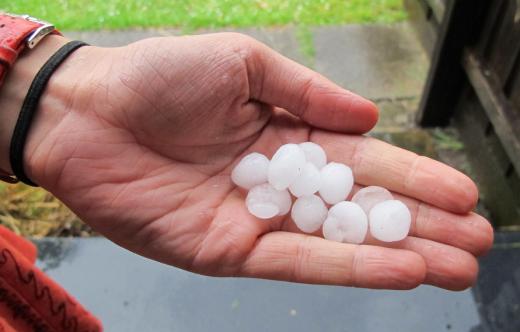
Once clouds have formed in the atmosphere, there are a variety of reasons why the water vapor of which they are made can turn into precipitation. Rain can be formed when the air around a cloud, because of turbulence or the collision of weather fronts, causes the vapor particles to collide and come together into larger drops. When the drops are large enough, they fall toward the ground as rain.
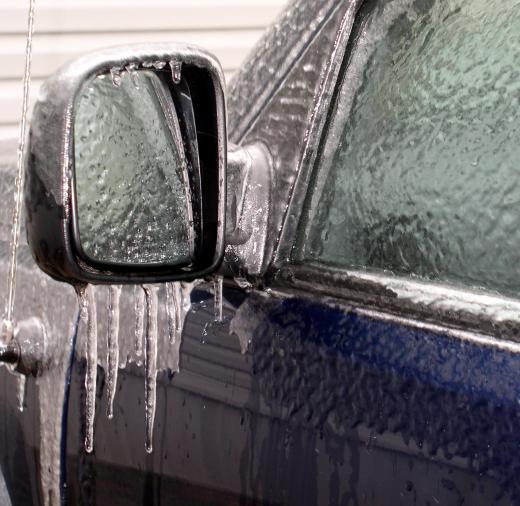
Precipitation also occurs when wind moves upward because of the presence of mountains. The movement of a large amount of air across a mountain ridge causes the air to cool rapidly, forcing the condensation of the moisture it contains. The condensed droplets fall as rain. The opposite effect, know as lake effect snow or rain, can occur over large bodies of water. The lake effect is when warm air rises from a large body of water and interacts with colder air above, causing condensation of the moisture.
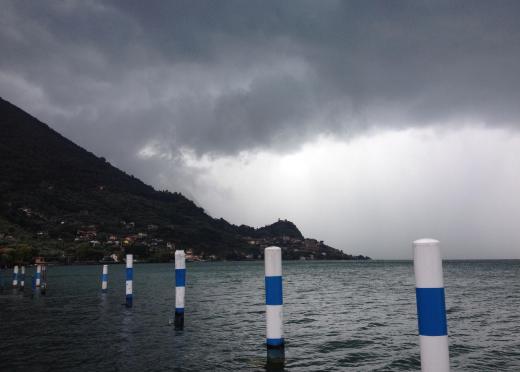
There are strict classifications for the types of precipitation that can occur. If the water falls as a liquid, it is called rain. Sleet forms in cold air when the drops are cooled and almost completely freeze, but do not harden. Hail indicates the droplets have been supercooled in the atmosphere, forming into solid balls of ice. Snow is formed when a single ice crystal begins to coalesce with other crystals and moisture, creating a crystal-like flake, and graupel is a soft hail or snow pellet on the spectrum between regular snow and regular hail.
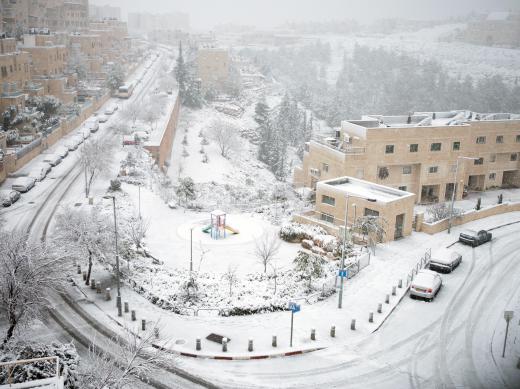
Precipitation is made possible by the water cycle of the planet. The water cycle is the process by which water on the ground is eventually turned into water vapor. The vapor travels up into the atmosphere, where it condenses into tiny particles and mixes with dust to form clouds. The process completes when the vapor condenses and falls to the ground again.
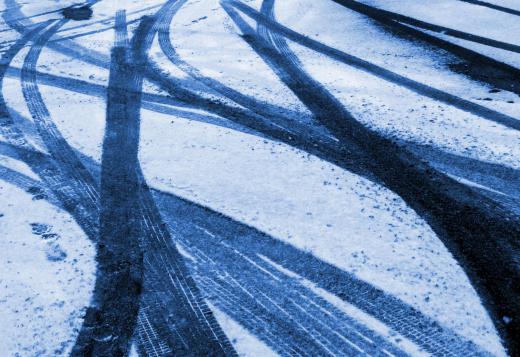
Water vapor in the atmosphere can interact with other particles that might be present and change the chemistry of the water. By coming in contact with sulfur dioxides and nitrogen oxides, extra hydrogen appears in the droplets and forms acidic rain that can have detrimental effects on objects with which it comes in contact. In certain areas of the world, including the Western Mediterranean, water vapor can combine with dust from deserts and take on a reddish hue. This is called rain dust.

The term "precipitation" also applies to a process in chemistry. It describes an event in a chemical reaction in which a solid is formed within a solution. The solid is usually denser than the solution and will fall to the bottom of the solution like rain.
AS FEATURED ON:
AS FEATURED ON:
















Discussion Comments
No matter how much we dread it, driving in bad weather is something we all have to face. You can't skip work or school just because there's ice on the road, and you can't stay indoors because the roads are wet and slippery. As unpredictable as precipitation is, apply your driving skills to the max and never be willing to take any risks, as it just might cost you your life.
@Chmander - I agree with you. When I got my first car about two years ago (during the summer time), it was very easy to adjust to road conditions, even in the rain. However, driving in snow was a different story. I can't give any "exact" tips on how to handle driving in snowy weather, but just remember to be very cautious and drive extra slow.
Speaking of precipitation, this article reminds me of driving in bad weather. I know that's not what the article is discussing, but I think it would be interesting to talk about regardless. Whether it's rain, sleet, snow or even hail, it's always good to adjust your driving skills in bad weather conditions. When we get our first car at a young age (which is more than likely during the summer time), aside from the rain and thunderstorms, we have little to worry about when it comes to driving conditions. However, by the time November and December roll around, that's a completely different story.
Post your comments